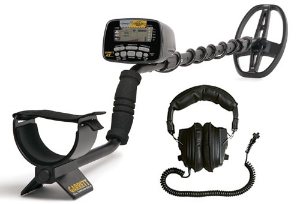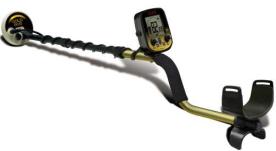Thursday, April 28 2022
Over the years, metal detecting has continued to become one of the most popular forms of gold prospecting, especially with folks new to prospecting. Panning, sluicing, and highbanking can be lucrative ways to recover the shiny stuff, but when you’re first bitten by the gold bug, you might opt for the simplest, quickest approach — swinging a detector. Not only is it physically easier than processing heavy dirt and rock, it offers the added bonus of finding more than just gold, such as coins, jewelry, relics, and other buried metallic treasures, too. Aside from record gold prices, another reason that people are eager to try metal detecting i The basic premise of metal detecting is allowing the detector to introduce an energy field into the ground, and allowing that field the opportunity to return any target information that it finds via the detector’s control box. The two most common types of metal detectors to consider: VLF (very low frequency) metal detectors are the most common type of detector. They work by sending out energy that is either reflected off or conducts through an object containing metal. The device then measures how long it takes for the signal to return. Frequency refers to how fast a metal detector sends signals into the ground. As the name indicates, these detectors use very low frequency coils (generally below 30 kHz.) The outer coil serves as the transmitter and the inner coil serves as a receiver. PI (pulse induction) metal detectors send energy into the ground and measure the decay of that signal. Anything that slows or speeds the decaying signal is a target. This technology sends powerful, short bursts (pulses) of current through a coil of wire. Each pulse generates a brief magnetic field. When the pulse ends, the magnetic field reverses polarity and collapses very suddenly, resulting in a sharp electrical spike. This spike lasts a few microseconds (millionths of a second) and causes another current to run through the coil. This current is called the reflected pulse and is extremely short, lasting only about 30 microseconds. Another pulse is then sent and the process repeats. Generally speaking, the higher the price of a metal detector, the more features it will have. More features translate into more knobs. The more features and/or knobs that a detector has, the more you are able to tune the metal detector to the type of hunting conditions that you are likely to encounter. With that being said, the downside to a large number of features is that even though you are able to fine tune the detector to match the local conditions, there are also more ways of setting up the detector incorrectly. Setting up a machine "wrong" may result in a decrease in depth and sensitivity and your $900 metal detector may be outdone by a $200 model! It is critical to read the owner’s manual that comes with your detector and learn to use it properly for maximum results. Keep in mind when shopping for a detector that gold detectors are not necessarily higher in cost, but they are built with a higher sensitivity to detecting gold nuggets, have better ground balancing and discrimination abilities, and could be the best option for you. The #1 question that everyone asks is “What is the best metal detector?” Unfortunately, there is no one single answer. Each metal detectorist has specific needs that cannot be met by one single detector. The easiest way to find the "best" detector is to evaluate YOUR detecting style, your experience level, what items you hope to find, and the time that you will spend metal detecting. After taking all of these things into consideration, then you will be able to find a metal detector that fits your needs and your budget. If you’re wondering how deep a detector can detect, realize that there are too many variables to be able to unequivocally quote a depth for any particular brand or model. The size of the target, how it is positioned, ground mineralization, ground moisture, and more are just some of the factors that affect the depth of a detector. When treasure hunting with your detector for coins, relics, or jewelry, use your imagination as to where to hunt — anywhere people are likely to have lost something or left something behind is a likely place to dig up good finds—playgrounds at schools and parks, picnic areas, campgrounds, new construction sites, ghost towns, old homesteads, woodlands, plowed fields and pastures, sports fields, showgrounds, and racetracks, swimming holes, beaches, jetties, and piers. Right under your feet might be a good place to start; you never know what you'll find in your own backyard! Remember to always know local laws before using your metal detector. Many state and national parks and historic sites do not permit detecting. Be sure to first ask permission to treasure hunt on private property. If you want to get out there this year and get your share of the gold but the idea of panning, sluicing, highbanking, or using another piece of gold mining equipment just isn't your idea of fun, that's OK. Consider a metal detector instead. Since the lure of uncovering a gold nugget of any size is addictive, you'll see people in known gold bearing areas swinging a detector, listening intently through their headphones for that magic tone that says DIG. Go ahead and join the fun! Today it is easier and more productive than ever to go treasure hunting. The metal detecting hobby has gone to a whole new level using state of the art technology that makes metal detecting equipment more high tech than ever. Sunday, December 20 2020
There is truly no single “best” type of detector when it comes to gold hunting. But understanding the differences between a VLF (very low frequency) and a PI (pulse induction) detector and their coils can help you decide which detector might be the “best” to use in a A VLF machine can have an advantage on shallow and very small targets, on and off of bedrock— as long as you can keep it stabilized, ground balanced, and the sensitivity set properly. PI detectors generally do better at greater depths than VLF machines, especially in highly mineralized soils. Mono coils are designed for PI detectors. There is a single winding inside the coil that puts a concentric pattern into the ground. You will always get more depth with a mono coil, but it is more susceptible to ground mineralization noise and it will be affected by the ground mineralization itself. Double D coils work for both PI and VLF detectors. Double D coils have two back-to-back D shaped windings inside the coil. At all times the coils are transmitting and receiving across the plane of the coil. The Double D design is like a knife blade that goes into the ground down the center of the coil. These coils are great at handling mineralization where it essentially takes the ground mineralization and distributes it all the way across the blade, lessening its effects. Concentric coils work with VLF detectors by using two separate windings inside the coil— one sends and one receives. When it comes to a round versus elliptical coil, there is really no difference in the size, only shape. Coils are measured off of a round coil configuration. For example, a 14 x 10 inch coil will have the same attributes as a 12-inch coil. The key difference is that elliptical shapes work extremely well in difficult areas. Although each metal detector has its pros and cons, you can’t go wrong by wearing the best headphones possible, no matter which brand or model you choose. Many gold nuggets you will find are only slight whispers in the detector’s threshold, so you want to always wear high quality headphones. Plastic scoops and a digging tool with a wide blade should also be in your accessory bag. When hunting, limit the amount of metal on your body, which includes wearing non-magnetic boots and belts. Put your car keys in your back pocket. Keep your cell phone in your back pocket, too, and make sure it’s off to avoid any interference. Sunday, December 30 2018
When prospecting an area that’s known for gold, put yourself in the boots of the old-timers who came before to Host rock (or bedrock) could be shale, diorite, granite, quartz, clay or other material. Keep an eye out for changes in the area’s host rock and notice the direction in which it’s running. Contact zones occur when a rock or mineral cuts or crosses the host rock. Generally, gold is deposited along contact zones, which can be a few inches or several hundred feet wide. If bedrock in your area runs north to south and you notice a color change in material that runs east to west, you’ve found a contact zone. Outcroppings are a lump of high ground with weather-worn rocks which are generally rounded and usually situated on ridges, but can be located anywhere. Especially look for iron staining on outcroppings. Ditch lines of yesteryear were generally dug into and run along somewhat level ground. Very close to diggings, especially in hilly or steep terrain, they may have been cut loose to wash downhill. Follow the old water ditches and see where they end up. Exploratory trenches were not used for water but most of the time were deeper and would often circumnavigate a rich area that may be throwing gold from clay lines, pockets, quartz seams and any other local contacts. Trenches were dug simply to expose any contacts that may be present. As a contact was crossed, old-timers checked it out in both directions for values. Rock cairns are piles of rock or stone used for claim corners. Standing high on a slope looking down is a great vantage point from which to spot cairns and other man-made landmarks. By locating a historic claim, you definitely have a great place to begin! Friday, December 02 2016
Metal detectors are electromagnetic devices and can detect items that are conductive or magnetic, or both. Gold is an example of a non-magnetic conductive item. Iron is both conductive and magnetic. Almost all major advances in prospecting metal detectors over the last 40 years revolve around improving ways to ignore and see through ground mineralization while still finding gold nuggets. If you’re using any brand of VLF (very low frequency) metal detector to prospect for gold, choosing the correct operating mode (also called search mode) can make or break your success. Experts recommend that any metal detector you are considering for gold prospecting should have a true all metal mode. This mode is important because of its lack of filtering applied to the signal. It will normally offer the best depth and the best sensitivity to small gold. Unfortunately, two common problems occur when using All Metal Mode: interference from ferrous iron and steel junk, and from hot rocks. A hot rock is nothing more than a rock that has a different magnetic content than the ground. Some rocks are that way because they contain conductive minerals besides gold. The Discrimination knob on your detector will help with these two problems. Discrimination is a type of electronic filtering. The signal is analyzed, and depending on the discrimination setting, identified as either a target to be dug or a target to be ignored. Applying more discrimination eliminates more trash, but be careful—you don’t want to completely eliminate all ferrous trash because an aggressive level of discrimination easily tunes out gold. So be prepared to still dig ferrous junk which usually turns out to be larger chunks of steel and iron. Also know that discrimination circuits can be fooled, especially in ground with lots of iron mineralization. This ground condition can override the small gold signal and cause a faint gold signal to be identified as ferrous. Even with this limitation, the discrimination mode can be invaluable for finding gold in extremely trashy areas. Trashy areas are where a VLF detector can really outshine a PI (pulse induction) machine, especially when dealing with nails, bits of rusted cans, and other small trash. If you’re in the market for a metal detector, some manufacturers offer special holiday packages such as the 3 listed below. You can also shop for Fisher, Garrett, Bounty Hunter, Minelab, Tesoro and Teknetics metal detectors here. Through Christmas only... FREE Recharge Kit and FREE 15” Coil and FREE Shipping with purchase of either Fisher F75 ($599) or Teknetics T2 ($499) detectors! Both machines are recommended for Coin Shooting, Relic Hunting, and Gold Prospecting. Garrett AT Pro holiday package ($594.96) includes detector, headphones, instructional DVD, Monday, April 27 2015
What is the best metal detector? This is probably the Number One question that everyone asks when How much do you know about metal detectors? Be honest because the answer also affects your budget. If you're just getting started and plan to go out just a few weekends a year, you may not want to shell out a lot of cash up front so a general all-purpose detector in the $200 range will suit your needs. If you have used a friend's detector a few times and are fairly serious about wanting to find gold and other buried treasures of your own, then buy a detector in the $700 range that is user-friendly. You will get a very good quality machine with plenty of bells and whistles, yet it won't require an advanced degree to actually use it. And you won't have to spend hours reading the owners' manual to understand it either. Before investing in a model that costs thousands of dollars, first be sure you love detecting and will use it often enough to justify the big price tag no matter what brand you decide on. Garrett and Fisher are two of the oldest manufacturers in the business.
What do you primarily hope to find? If you want to find gold, you'll need a detector especially made for that purpose. Gold detectors are not necessarily more expensive, but they are built with a higher sensitivity to detecting gold nuggets, and have better ground balancing and discrimination abilities. PI machines aren't so good for coin shooting in urban areas where you are likely to encounter iron trash, however, they are ideal for beaches or detecting in other highly mineralized soils, especially if you are looking for objects that are deeply buried. VLF detectors are more sensitive to finding the smallest bits of gold, but do not as easily cancel out ground mineralization.
Metal Detectorist Code of Ethics
Monday, January 19 2015
PI (pulse induction) detectors work a bit differently than the more common VLF (very low frequency) detectors by putting magnetic field energy into the ground and then switching off and waiting a short period before they start to look for a response. This makes them better at handling ground mineralization than a VLF detector because during that short delay the magnetic response of iron trash minerals that you don't want to find dies out. VLF detectors do not as easily cancel out ground mineralization the way a PI metal detector can do. Kevin Hoagland, Executive Director of Development for the Gold Prospectors Association of America recently field tested the Garrett ATX Deepseeker. Below is an excerpt of Kevin's review: "My first impression of the ATX was that it's compact, heavy and built like a tank, and all connections are waterproof. Battery installation is simple. The ATX uses 8 AA batteries in two 4-battery drop-in packs and comes with an 8-slot AA battery charger. Not only does this detector come with a rugged case and carry bag, but also everything else you need to get out detecting. The units ships with the 20 inch mono coil already installed. It is also shipped with headphones that are screwed into the back of the unit. I slipped my arm into the adjustable cuff, and grabbed the control pod. There was no unnecessary torque on
As with most large PI detectors, the Garrett ATX Deepseeker Metal Detector is not light, and the waterproofing adds extra weight. Were it not for the ergonomic design, detectorists not accustomed to the weight of these machines might tire quickly. The supplied sling is easy to use, adjust, and offers a fair way to alleviate some of the weight, but I found it uncomfortable for long periods of use. Many avid detectorists use after-market harness systems, so you may want to check out those options if you plan to spend long days detecting. In the field, the Deepseeker performed exceptionally well. The unit demonstrated almost complete immunity to all but the worst hot rocks I encountered. The ground balance and multi-speed ground tracking worked great, but I found that I rarely used the ground tracking as the ATX handled most of the soil mineralization in the OFF position. The threshold was quick to respond to ground changes and a simple ground balance was all that was needed to bring the ATX back into maximum depth and sensitivity. The Iron Check works well, maybe even too well! I dig everything no matter what and I have had a very successful nugget-hunting career doing just that. I have found good targets under junk on many occasions. Be careful and mindful that gold, like junk, is where you find it and there is no law of detecting that states there will be no gold under junk! Regardless of your level of detecting expertise, it will take some time to get comfortable with all the functions and navigating the menus of the ATX. With multi-button presses to access some functions, it's important to take time to learn the machine well beyond the quick-start level. Overall, Garrett has created a PI detector that is extremely well made with solid functionality. The ATX offers great value for your dollar. Garrett has again carved a niche in the metal detector market, and the ATX perfectly has met the needs expressed by detectorists worldwide..." You can find Kevin's complete field test review on pages 16-19 of the November/December 2014 issue of Gold Prospectors Magazine, or download the .pdf here. You can also get more information and watch a video of the Garrett ATX Deepseeker Metal Detector on this website. Saturday, May 03 2014
The abbreviation kHz stands for ”kilohertz” which is the measurement of radio frequency radiation. A Hertz is the unit of measurement for counts per unit of time. Frequency is the number of occurrences of a repeating event per unit time. The higher the frequency, the more waves travel through space during a given time
PI (pulse induction) detectors work a bit differently by putting magnetic field energy into the ground and then switching off and waiting a short period before they start to look for a response. This makes them better at handling ground mineralization than a VLF machine because during that short delay the magnetic response of iron trash minerals that you don't want to find dies out, but the signal from tiny bits of buried gold does, too. VLF detectors are more sensitive to finding the smallest bits of gold, but do not as easily cancel out ground mineralization. If you've been shopping for a metal detector, you might have noticed that the manufacturers list the kHz of each machine. But how do you know if a higher or lower frequency is better? In most situations, a few kHz one way or the other will have a negligible impact on performance out in the field. The importance of frequency is most noticed when you are hunting for one particular type of treasure over another. For example, if you are coin shooting at the park, you can opt for a lower frequency metal detector which will cost less. However, if your main objective is to find gold nuggets with your detector, consider a higher frequency machine such as the Fisher Gold Bug 2 or Garrett AT Gold. Sunday, December 01 2013
Dry washers are like highbankers except they do not use water to recover gold. While wet processing is nearly always faster and more efficient, especially for fine gold, dry washers are the best tool for recovering gold nuggets, pickers, and flakes from dry materials in the desert or other areas where water is not plentiful. Keep these tips and tricks in mind when using a dry washer: • Double-check all the "throw away" rocks. Scanning them with a metal detector is a great way to ensure you're not tossing aside gold-laden rocks. Also, don't assume old tailings piles have been totally worked out. This is another time to use a metal detector because ordinary rocks could be laced with gold and completely over-looked by earlier prospectors.
Thursday, November 14 2013
If you've been prospecting for gold using a pan, sluice, highbanker or other traditional piece of equipment, there's another tool you may want to consider— a metal detector. Gold detectors are not necessarily higher in cost than an all-purpose detector, but they are built with a higher sensitivity to pinpointing pieces of gold, and have better ground balancing and discrimination abilities.
PI (pulse induction) detectors work a bit differently by putting magnetic field energy into the ground and then switching off and waiting a very short period before they start to look for a response. This makes them better at handling ground mineralization than a VLF detector because during that short delay the magnetic response of iron trash minerals that you don't want to find dies out, but the signal from tiny bits of buried gold does, too. VLF detectors are more sensitive to finding the smallest bits of gold, but do not as easily cancel out ground mineralization. Friday, November 01 2013
At first glance, metal detecting seems like the least demanding form of prospecting for gold. But it has its share of challenges, too, just like sluicing, drywashing, or panning by hand. Whether you've been swinging a metal detector for years, or just purchased your first machine, there might be a few things you could do to increase your chances of uncovering a piece of buried gold. Nugget of News Blog |
|
Nugget of News Blog |






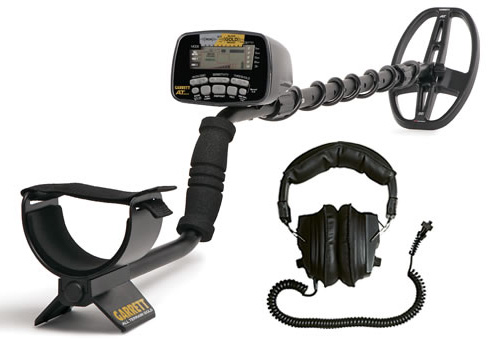
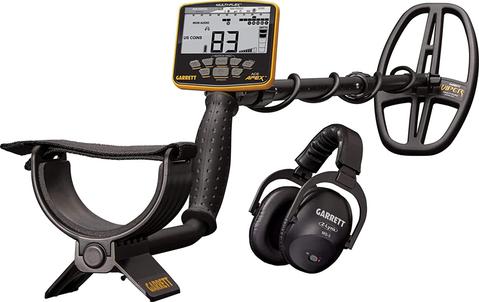
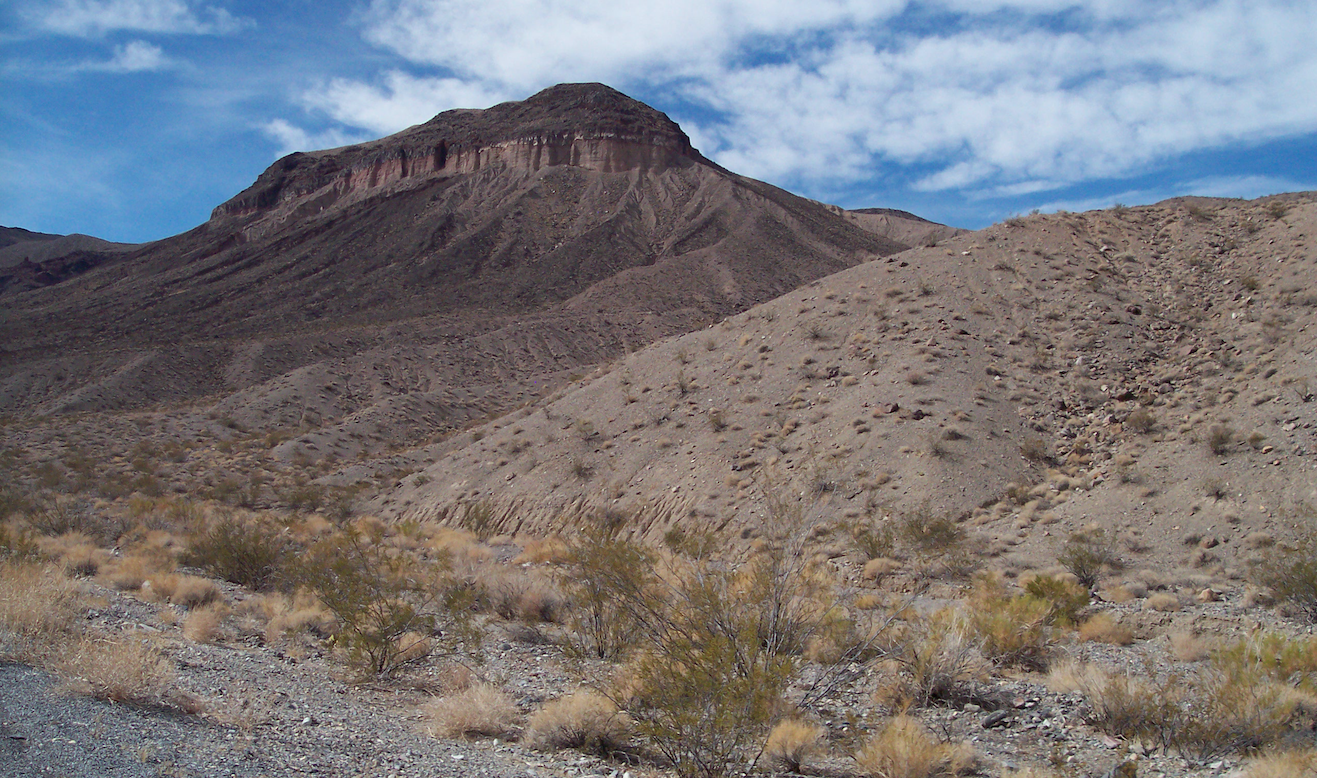 help you decide where to begin. Look at your site from all directions and think about what they could and could not do way back then. Your modern-day equipment and knowledge are a lot more advanced than what they had to work with, so you’re already a step ahead! Many times miners jumped in with both feet and started mining to beat the other guys. But being in a hurry meant they could have missed a lot, or moved on too quickly from their original discovery before it was completely worked out. Considering the lay of the land will reveal important clues that can help you better formulate a plan when you're out in the field. Here’s what to look for:
help you decide where to begin. Look at your site from all directions and think about what they could and could not do way back then. Your modern-day equipment and knowledge are a lot more advanced than what they had to work with, so you’re already a step ahead! Many times miners jumped in with both feet and started mining to beat the other guys. But being in a hurry meant they could have missed a lot, or moved on too quickly from their original discovery before it was completely worked out. Considering the lay of the land will reveal important clues that can help you better formulate a plan when you're out in the field. Here’s what to look for:

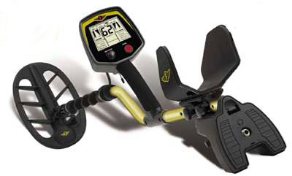
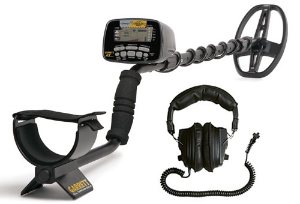
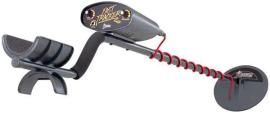
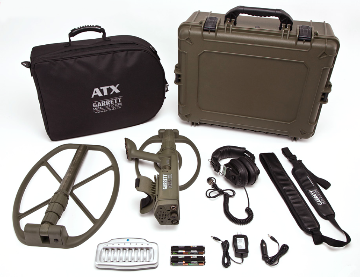
 my wrist, which gave it a perfect fit and feel, and allowed me to work all of the control buttons easily with my thumb. I pushed the unit out in front of me a bit and turned on the power switch, which is located on the back of the unit. The Garrett ATX Deepseeker Metal Detector goes through its startup and self-diagnostic test. Every light on the control pad comes on and unit emits several different sounds before settling into a comfortable, but high, threshold. This is not a turn-on-and-go detector. Either read the entire owners manual before you go out hunting, or at least read the first two pages of the manual— page 1 is the Quick Start Guide and an explanation of how to access the functions of the ATX quickly, and page 2 shows you where to find more information concerning those functions.
my wrist, which gave it a perfect fit and feel, and allowed me to work all of the control buttons easily with my thumb. I pushed the unit out in front of me a bit and turned on the power switch, which is located on the back of the unit. The Garrett ATX Deepseeker Metal Detector goes through its startup and self-diagnostic test. Every light on the control pad comes on and unit emits several different sounds before settling into a comfortable, but high, threshold. This is not a turn-on-and-go detector. Either read the entire owners manual before you go out hunting, or at least read the first two pages of the manual— page 1 is the Quick Start Guide and an explanation of how to access the functions of the ATX quickly, and page 2 shows you where to find more information concerning those functions.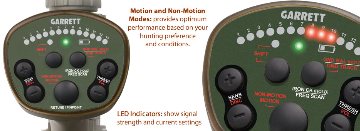 There are 5 major functions that are completely user-adjustable: Mode, Sensitivity, Threshold, Volume, and Ground Balance. Are functions are easy to adjust with a basic understanding of the ATX and more tunable as you become more proficient. Secondary functions include iron check, tracking, discrimmination and frequency shifting, to name only a few.
There are 5 major functions that are completely user-adjustable: Mode, Sensitivity, Threshold, Volume, and Ground Balance. Are functions are easy to adjust with a basic understanding of the ATX and more tunable as you become more proficient. Secondary functions include iron check, tracking, discrimmination and frequency shifting, to name only a few.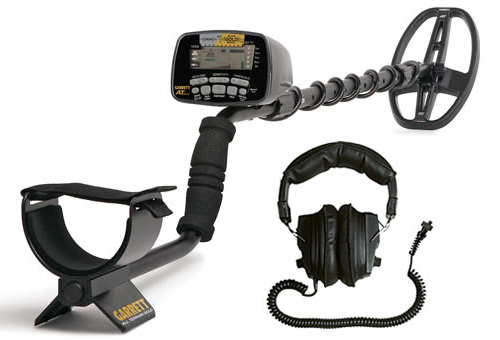
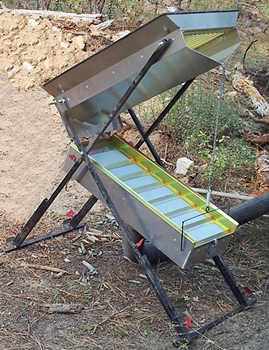 Drywashers are operated by shoveling gold-bearing gravels into an upper box which is covered with a screen. The larger rocks that are too big to pass through the screen slide off. Gravel small enough to go through is fed down into the lower gold recovery box, which is an inclined trough with cross riffles much like a sluice. The bottom of the recovery box consists of a thin, light-weight porous cloth. Beneath the riffle box is a blower that pulses air up through the cloth. The vibrations and air flow, combined with the shaking and classifying action of the dry washer allows the gold to settle to the bottom where it is captured in the riffles.
Drywashers are operated by shoveling gold-bearing gravels into an upper box which is covered with a screen. The larger rocks that are too big to pass through the screen slide off. Gravel small enough to go through is fed down into the lower gold recovery box, which is an inclined trough with cross riffles much like a sluice. The bottom of the recovery box consists of a thin, light-weight porous cloth. Beneath the riffle box is a blower that pulses air up through the cloth. The vibrations and air flow, combined with the shaking and classifying action of the dry washer allows the gold to settle to the bottom where it is captured in the riffles.